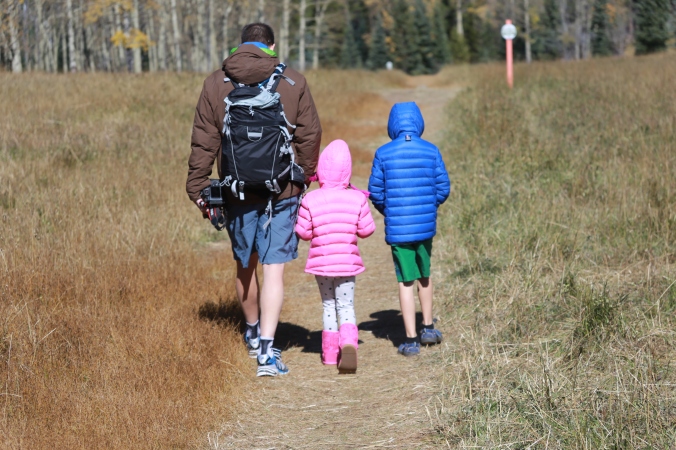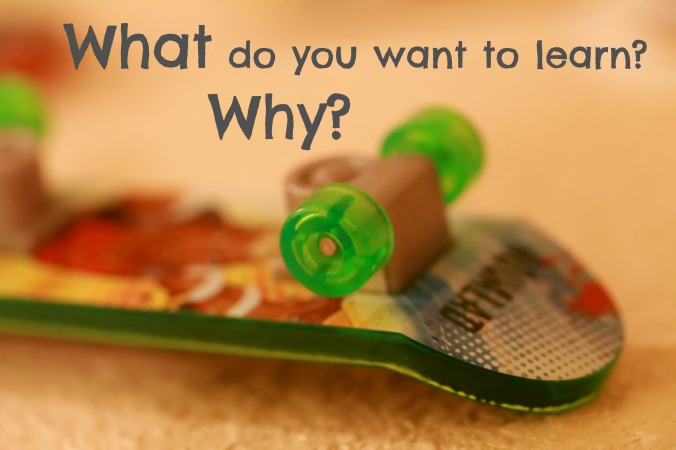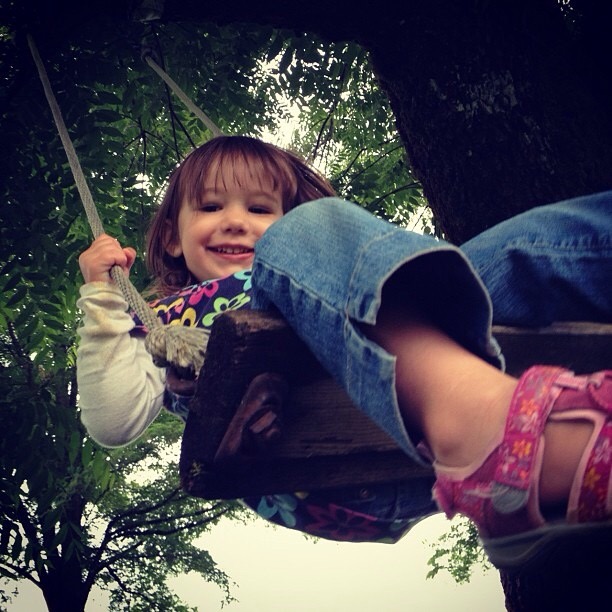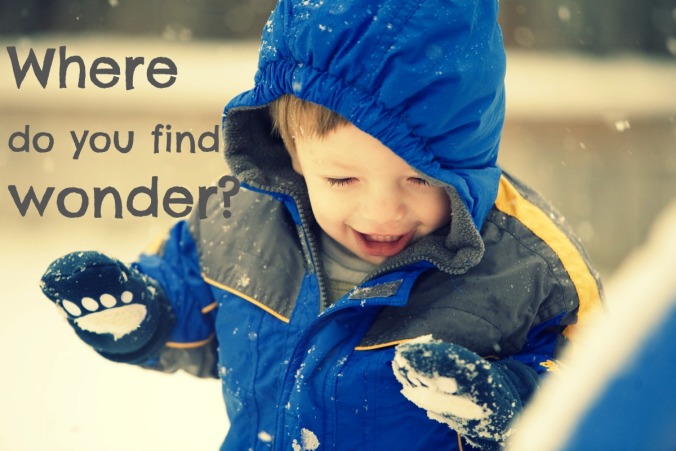Sam’s Top 10 Must-Have Materials for Learning
Sam and I brainstormed this list tonight. His first answer to, ‘What are some things that help you learn?’ was ‘Money!’ I asked him to think about things that don’t cost a lot of money or that he already has. The phrasing below is straight from him.
1, 2, 3, and 4. An iPad, for Minecraft, web-searches, and taking photos and videos
5. Books from the Library
6. Legos
7. My Microscope
8. My Bicycle
9. Being Outside
10. Talking to other peeps!
What’s on your list of must-have learning materials?
Asking Questions, Without Asking Questions
When I brought up the question, “What do you want to learn?” with the kids last week, I was surprised by their answers. Or really, their lack of answers. Neither one really had any burning ideas of what they wanted to learn. This was surprising because I know they want to learn about millions of things, but the direct questioning was too much for them.
So instead of badgering them with my inquiry questions, I had to chillax a little and just pay attention. Observation, go figure.
Here are a few things they’d like to learn about right now, in no particular order:
- how to roller skate
- where the best sledding hill is in Denver
- why printed artwork looks different under a microscope than original artwork
- how to ski
- publishing a magazine
- running a Minecraft club
- collecting buttons
- making Flipagram movies
Luckily I’m interested in learning about most of those things too – the only one I’m skipping out on is skiing.
What do your kids want to learn about? How do you know?
Start With a Question (Saturday Version)
Practicing Yes
Throw-Back Thursday: Taking On Challenges (Mind in the Making Book Study)
This post is from June 30, 2011. Look at Bel, ready to open doors and take on new challenges…
Chapter Six of Mind in the Making by Ellen Galinsky is called Taking On Challenges, and the topic was very meaningful to me this week.
Although we have a blessed and relatively low-stress life, we also ride a roller coaster of emotions on any given day. Sometimes I see blogs or web-sites about families and parenting, and I let myself believe that other families are somehow happier, less stressed, and more balanced. My rational brain knows that it’s simply not true, and that every family experiences a full range of emotions, sometimes within 5 or 10 minutes. The picture perfect snapshots aren’t always true representations of the complexity of being alive.
I hope that my own writing here on this blog doesn’t gloss over that fact. Every day, whether it’s during my work year or when I’m home with the kids full time, I experience great joy, but also frustration, sadness, boredom, and sometimes anger.
A certain amount of stress is a normal part of life, and Galinsky writes about the importance of being honest with children about that reality. If we pretend that we don’t experience a full range of emotions, we’re doing them a disservice. We also need to give kids tools to productively work through their own emotions, which includes a lot of modeling on the part of parents and teachers.
Galinsky addresses important factors that affect how children take on challenges and stress, including the child’s temperament and parenting styles. These factors can play off of each other in ways that benefit the child, or the interaction can swerve in a less positive direction. For example, if a child is naturally sensitive or reactive (the temperament he was born with), and the parent reacts to the child’s reactions in a way that is either alarmist or intrusive (p.276), the child will struggle more with his own sensitivity.
I mention this example specifically, because it’s an area where I want to improve. I’d say that both of my kids are somewhat sensitive, and I know that I sometimes react to their distress in an alarmist way, particularly when I’m also stressed or tired. As I wrote above, I know that I can’t (and shouldn’t) aim to be ‘perfect’ in my reactions to them, but it’s something I want to be more aware of, so that I can start giving them better tools for reacting to the challenges and stresses that they’ll inevitably face in the world.
While all of Galinsky’s suggestions at the end of the chapter are great, I’m focusing on the following this week:
Suggestion 1: Manage your own stress (for me, exercise and sleep are huge priorities)
Suggestion 2: Turn to others who can help you manage your own stresses
Suggestion 3: Take time for yourself
What do you do to manage your own stress? What do you do to help your children manage stress and take on challenges?
Where do you find wonder?
Under the Tree
From our Family Lab blog, on Dec. 2, 2012:
Let us not be satisfied with just giving money. Money is not enough, money can be got, but they need your hearts to love them. So, spread your love everywhere you go.
Mother Teresa
Throw-Back Thursday: Slowing Down and Taking Ownership
This Throw-back Thursday post is from November 23, 2011. I’m very happy to report that during the past three years our district has been able to add more than 1000 iPad minis to our preschool and kindergarten classrooms, thanks to grants and the hard work of our fabulous accountant, director, and office manager who all recognized the need for teachers to have the right materials to document student work quickly and easily.
I’ve been fortunate to be in more classrooms over the past few weeks, so I’ve been taking lots of pictures. I carry my iPhone with me, and use it to capture photos, videos, and sometimes voice recordings. There are two things that I’ve noticed, when I ask a child if I can photograph what they’re working on – most children begin to slow down and many children seem to take more ownership of the project.
As soon as I snap a photo, I ask the child if he’d like to see the picture. Every child I’ve worked with is very eager to see the results. The child looks closely at the photo, and then returns to play. Most of the time, if I’m still nearby, the child will ask me to take subsequent pictures, as the work progresses. I’ve noticed children who were rushing, begin to slow their play/work down a little. They’ll make a change in the configuration, then ask for another photo, in order to see the subtle change captured.
The project seems to become more valued by the child, and I don’t know whether this is because an outsider has noticed the project, or whether it’s because it’s been captured on ‘film’. Or, maybe the project would have been just as valued, regardless of the camera or outside influence – it’s difficult to know.
I wish there was a way for me to quickly and easily print out photos in the classroom, in order to leave the documentation with the child. I know that I can send them to the teacher later, but it’s the immediacy of seeing the photos during centers, that seems more powerful.
My favorite sequence came from a small group of boys, who were experimenting with ramps and cars. One boy in particular, M., wanted me to capture the cars in motion on the ramp. I would love to get more cameras, for kids in our classrooms to use – I know M. would’ve been very interested in trying to capture the images himself.
Who do you see in your books?
I love the days that I get to be in classrooms with kids. Today I visited with a quartet of kindergarten boys that were working on their independent reading. They were SO excited to be reading, but they became ecstatic when one guy noticed that a character in his book resembled him.
The boys went on to search through each book in the bin, finding their doppelgängers (as well as the long lost twins of many of their classmates). One of my new friends, Anthony, was temporarily crestfallen when he couldn’t find himself. In a few minutes he victoriously showed me a book called My Family which included ‘himself’ and his grandfather.
The photo search led the boys to briefly discuss race and ethnicity. Their statements were so matter-of-fact:
That boy is Chinese, and so are you, right?
Amir, that boy looks like your brother, because he has brown skin and hair like yours, but he’s shorter than you.
I don’t know if any of these guys are Mexican, like me…Oh! This one is for sure!
And then they moved on with their day. That short but important conversation wouldn’t have happened if the boys hadn’t been able to see themselves in the illustrations and photos.
We use a tool to rate our district preschool classrooms called the ECERS-R (Early Childhood Environmental Rating Scale – Revised), and it includes sections about diversity in the visual environment, as well as in classroom books. I’ve seen teachers put out extra photos and books before their rating month, but diversity should be part of the environment and children’s book choices every month. I hope that we can consistently provide diverse materials not to gain points on a rating scale, but because it’s the right thing to do. For Anthony, Amir, and countless other students, thoughtful book choices could make all the difference in their engagement and motivation as they learn to read.
Who do you see in your books?
In early readers and in higher level books without illustrations, can students ‘see’ kids they can relate to, in addition to kids who are different from them?
Even if you’re not working with or raising kids right now, who do you see in your adult fiction choices?















